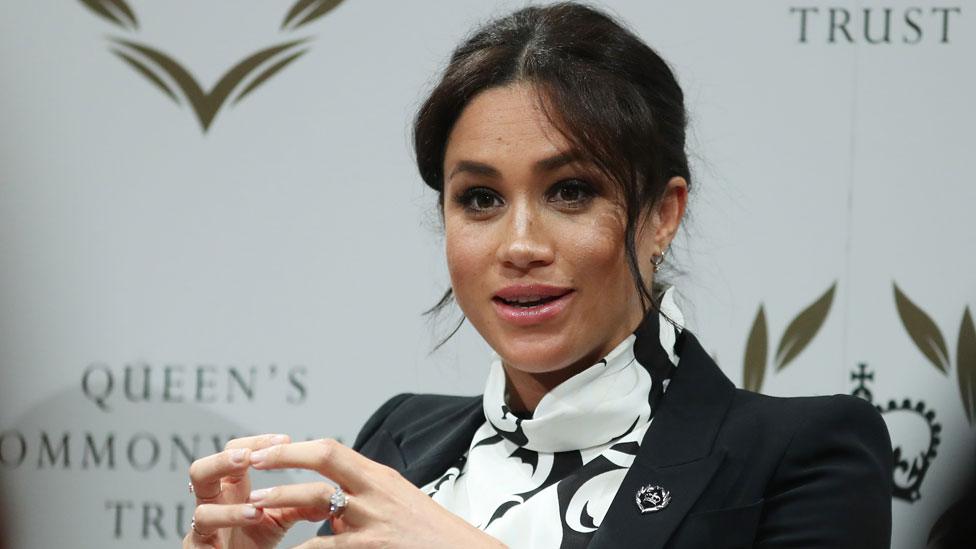Royal baby: Meghan, Harry and the fine line between public and private life
- Published

Privacy or publicity - what will the couple choose for their baby?
"Seclusion", wrote former British Prime Minister Lord Salisbury, "is one of the few luxuries in which royal personages may not indulge".
So what's going on with the birth of the Duke and Duchess of Sussex's first child?
Buckingham Palace announced some weeks ago that there would be no information given out about the birth, beyond that it was happening.
And so it was that shortly before 14:00 BST on Monday, a brief statement from Buckingham Palace announced that Meghan had gone in to labour, followed 40 minutes later by confirmation of the baby's arrival - a boy, weighing 7lbs 3oz.
That meant the strange British circus of journalists, photographers, royal superfans and bemused passers-by gawking at a hospital door for days on end would not happen.
Instead, we have an arguably stranger British circus of the same group of people positioned at the end of Windsor's Long Walk, close to the Sussexes' new home.

The new family home is at Frogmore Cottage, Windsor
This is on the presumption that a birth is happening somewhere in the vicinity - but in the knowledge that nothing at all will be seen of mother, father, or indeed newborn child.
There is no great constitutional outrage here. The "tradition" of royal babies being paraded within hours of their birth goes back around four decades; not much more than the blink-of-an-eye in the history of the British monarchy.
Why the couple have chosen privacy over publicity is not too difficult to fathom. Harry still can't abide the media; he scowls at, or turns away from, cameras and casually throws insults at journalists covering his activities.
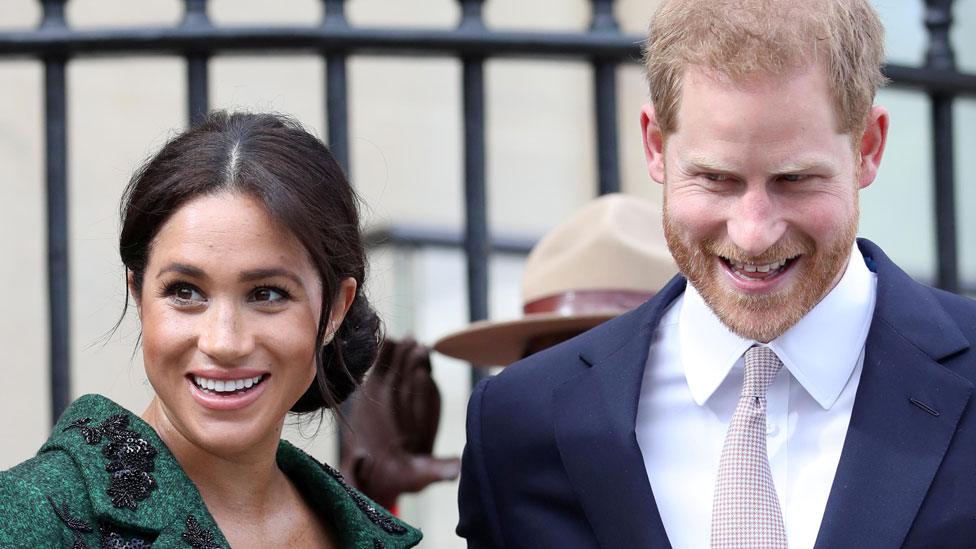
Meghan has described social media as "noise"
Meghan too has made it clear that she has little time for news coverage. She said a couple of months ago that she doesn't read the papers or look at social media, calling it "noise".
Why would either of them want to go through the arguably odd ritual of parading their newborn child in front of hundreds of cameras and journalists?
A difficult line to tread
What follows the birth is perhaps more important. They will have decisions to make about just how royal they want their child to be - in title, upbringing and public exposure.
And the couple have a difficult line to tread between their public life and the life they would prefer to remain unseen.
That line, between the royals' public and private life, has shifted over the decades.
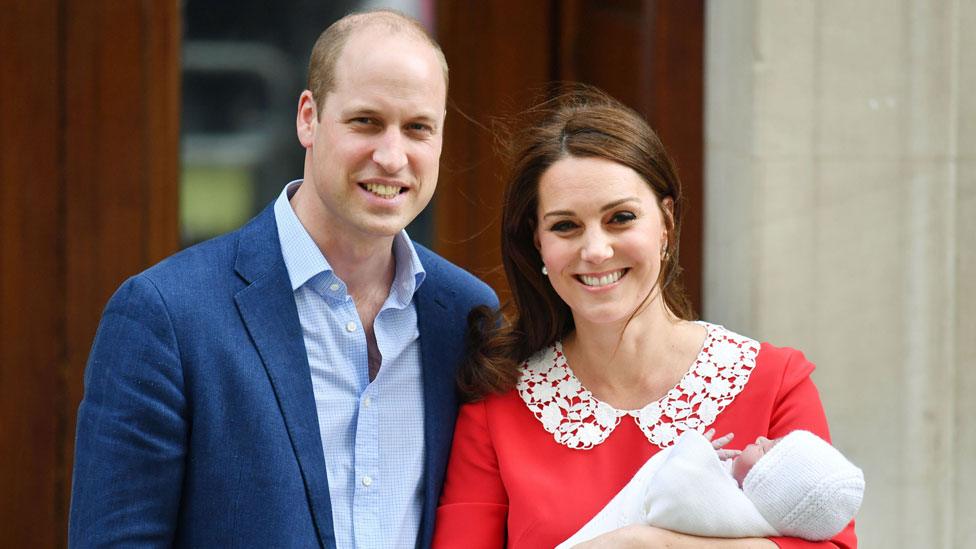
The Duke and Duchess of Cambridge, here with newborn Prince Louis, have posed on the Lindo Wing steps after the birth of each of their three children
First, the Queen, Prince Philip and their young children were presented as an example to the nation in the 1950s, a kind of "first family".
Then in the late 60s, amid flagging interest in royalty, cameras were allowed into some of the family's more private moments - meals and barbecues and the like - in the BBC film The Royal Family.
It is difficult, if not impossible, to put that genie back in the bottle. Public exposure of what most people would think of as private life is part of royal duty.
Lustre of royalty
And that's the catch for Harry and Meghan going forward. They want to do good, to bring their star power to bear on causes that they care about.
But it is the lustre of royalty, not just plain old celebrity, that makes them different, giving them the power and platform to effect change.
They have sought to control the publicity around their lives, through insisting on privacy where they can, creating their own household, and establishing their own social media account.
But more fundamental choices loom, about how their child grows up, and whether they want the continued exposure that being royal brings.
- Published4 April 2019
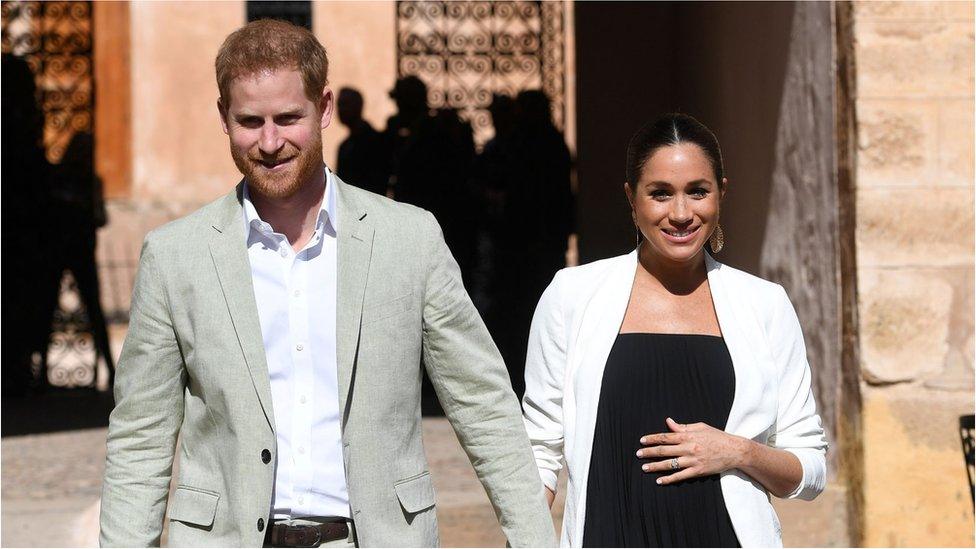
- Published14 April 2019

- Published3 April 2019
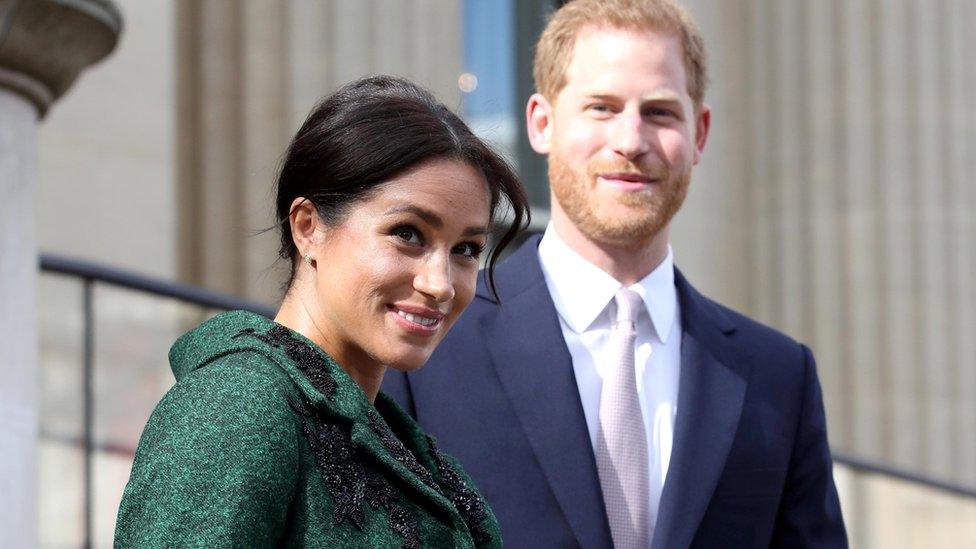
- Published8 March 2019
